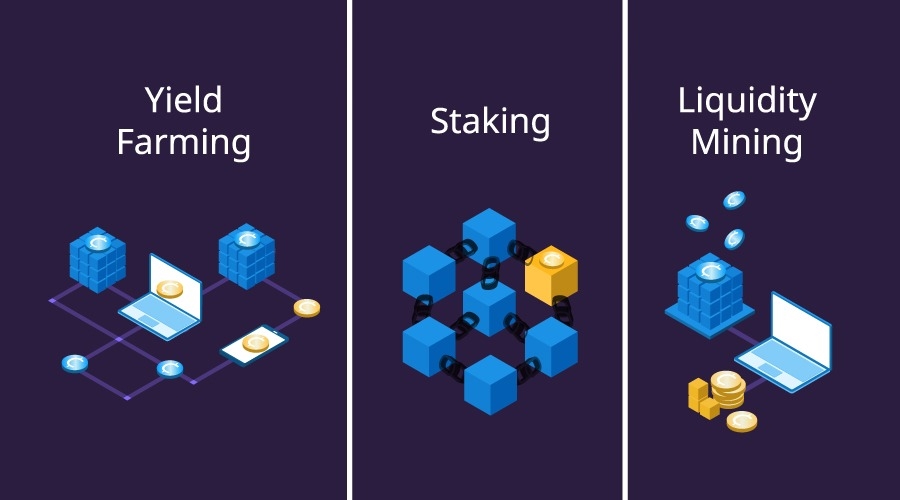Over the last five years cryptocurrencies have exploded at an unprecedented rate, but so have the different methods of making income in the cryptocurrency world. No longer do investors have to simply rely on trading to make a profit from crypto. Now, crypto enthusiasts can contribute to blockchains through PoS (Proof of Stake), provide liquidity to pools, and extract the best possible yields through farming. The possibilities are almost endless and ever-expanding for investors wanting both passive and active income-generating activities.
With such great returns available to be made in the cryptocurrency world, analyzing the opportunity cost of each option is the best way to find a route that suits you.
Let’s discuss the differences between Yield Farming, Staking and Liquidity Mining:
What Is Yield Farming?
Yield farming is the act of generating rewards such as interest and cryptocurrency by staking assets on dApps through a DeFi platform. The cryptocurrency is locked up for a certain period of time and acts as liquidity for lending, borrowing and trading.
Automatic Market Makers (AMMs)
A key concept for yield farming is AMMs, which liquidity
























